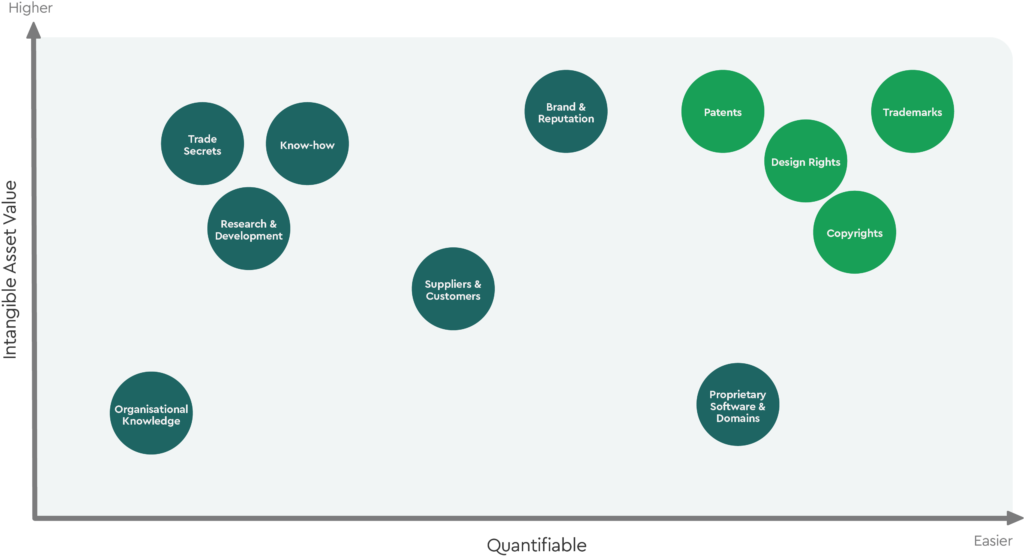Identifying and quantifying Intangible Assets (IA) is a common dilemma for organisations of any size, from bootstrapped start-ups to massive global enterprises.
Let’s start with the basics: tangible assets are physical assets; intangible assets are not. This simple reality has unfortunately been misconstrued many times and has led to a misunderstanding of what actually is an intangible asset.
Broadly speaking, the world has been shifting from an industrial economy reliant on physical assets to a more knowledge-based economy reliant on intangible assets. Intangible assets are often described as an organisation’s “Intellectual capital” or “Intellectual property”. These intangible assets contribute to a company’s enterprise value but have little to no value on a company’s balance sheet – despite driving margins above the balance sheet cash multiples. For example, lack of IA understanding and a weak balance sheet can result in awkward conversations with potential investors or business partners. From an investment perspective, underperforming balance sheets may hold more value than traditionally perceived. Likewise, overperforming balance sheets may carry a risk that is not identified.
IA value is misunderstood.
“Intangible asset” is a broad umbrella term that includes many different types of assets. Intellectual property is a term often used in place of intangible assets, but it is important to realise that intellectual property is only one type of intangible asset.
In its broadest sense, intangible assets can be grouped into two: intellectual property (IP) and intellectual capital (IC).
Ten intangible assets you need to know

All ten types of intangible assets, plotted on the graph above, are highly valuable for businesses, and will weigh differently in specific industries. The graph is a simple representation of how some IA is more quantifiable than others, yet all drive value. The difficulty for executives is managing IA – much of which walks out the door with a key employee and USB thumb drive for example.
Intangible assets are pivotal to your competitive advantage. They are the major drivers that move enterprise value beyond cash flow multiples. Organisations which actively identify the value of their IA portfolio and pursue ways to protect their IA differentiate themselves from their competitors. Think of the most powerful companies around the world – Apple, Amazon, Google, BP, Chevron…etc – they all actively manage and robustly defend their IA. It’s not optional for companies that want to excel.
